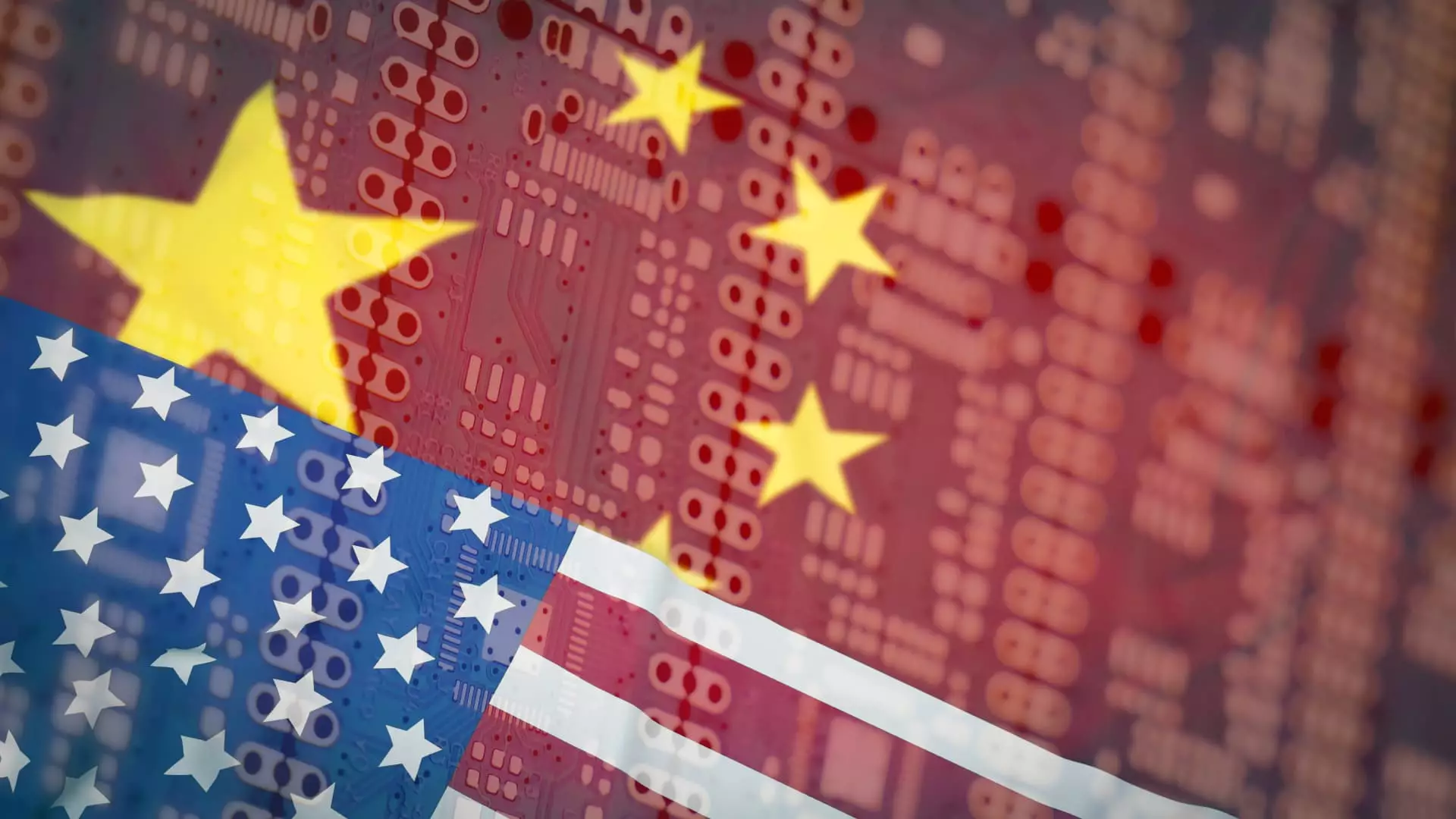The global technology landscape is witnessing an unrelenting race in artificial intelligence (AI), and China’s giants — Tencent and Baidu — are steering assertively ahead even as the United States tightens semiconductor exports. The complex interplay between innovation, resource management, and geopolitical maneuvering underlines the disparity that could shift global technology balances. While the U.S. maintains a stronghold with its technological might, China’s emerging strategies present a formidable counter-narrative, showing resilience and adaptability that warrants scrutiny.
Strategic Stockpiling: A Future-Proof Approach
Tencent’s President, Martin Lau, laid bare a pivotal strategy: the proactive stockpiling of chips, particularly the critical graphics processing units (GPUs) essential for AI model training. The foresight to accumulate these resources has positioned Tencent to weather external shocks from export limitations effectively. This is not merely about being prepared; it reflects a nuanced understanding that the reliance on continuous acquisition can backfire. Instead of playing a waiting game for new GPU batches, Tencent has shrewdly optimized its existing inventory, illustrating that innovation does not always stem from quantity but can also arise from astute management and deployment of what is already at hand.
The notion that Nvidia and AMD’s GPU clusters must continually expand to enhance AI capabilities is a concept Tencent appears ready to challenge. Lau suggests that the idea is overly simplistic; a smaller, optimized set of high-end chips can deliver robust performance. This counter-strategy not only questions conventional wisdom but also indicates a shift in focus towards more efficient use of available resources rather than reckless accumulation, which often characterizes tech rivalries.
Software Optimization: The Unsung Hero
Perhaps the most notable—and often underrated—element in Tencent and Baidu’s approach is their emphasis on software optimization. While hardware constraints pose a significant challenge, the realization that software can enhance the efficiency of existing resources is a powerful insight. For Tencent, the strategy to pivot from sheer hardware might to sophisticated software solutions underscores their adaptive resilience. Refusing to be hindered by chip shortages, they advocate for innovative algorithms and smaller, less resource-intensive models. This approach diminishes dependency on foreign technology, counteracting pressing geopolitical pressures with home-groomed ingenuity.
Baidu’s achievements in what they term “full-stack AI capabilities” further underscore this notion. Their ability to interlace cloud computing with advanced AI applications like the ERNIE chatbot showcases a maturity in tech ecosystem development often overlooked. Baidu emphasizes that effective use of its GPU arsenal can still yield significant output despite the constraints of advanced chip access. Their perspective portrays a systemic integration of technology that enriches their operational fabric and underlines their competitive edge.
The Promise of Domestic Innovation
As the U.S. tightens its grip on semiconductor exports, China’s rapid advancement in domestic chip development has been a game-changer. Both Tencent and Baidu highlight a transformative narrative that embraces self-sufficiency. Dou Shen’s comments on Baidu’s AI cloud capabilities reflect a confidence in their proprietary ecosystem, which is not only driving costs down but also enhancing the nation’s technological sovereignty.
The ongoing assertion that domestic semiconductor technology is on a growth trajectory should not be dismissed lightly. While experts recognize that China still trails behind U.S. tech in AI chips, there has been undeniable progress in the foundational aspects of chip development. From material sourcing to manufacturing techniques, China’s approach signifies a long-term vision. Contrary to conventional wisdom, the country’s commitment and resource allocation to achieve semiconductor independence is shaping an environment ripe for the next tech breakthrough.
Global Repercussions of Export Restrictions
The tightening of semiconductor exports by the U.S. should raise alarms not just in China but across the entire tech ecosystem. Nvidia’s CEO, Jensen Huang, recently described these curbs as ultimately destructive—not to China but to American interests. Such sentiments reflect a broader discontent among U.S. tech leaders who are beginning to question the efficacy of restrictions that inadvertently motivate international rivals to innovate independently.
The impetus for curbing exports appears to stem from a sound intention to maintain technological superiority; however, it risks creating an emboldened competition that accelerates innovation in nations like China. The potential for U.S. companies to fall behind while simultaneously spurring Chinese advancement presents a paradox that policymakers must grapple with as they navigate the intricacies of global tech competition.
In view of these developments, it raises an essential question: are these export restrictions genuinely in the best interest of the U.S., or are they inadvertently sowing the seeds for a competitive imbalance in the global technology race? The answer may lie not in the mountains of chips that can be amassed, but in how innovation and adaptability are fostered in an increasingly complex geopolitical landscape.

